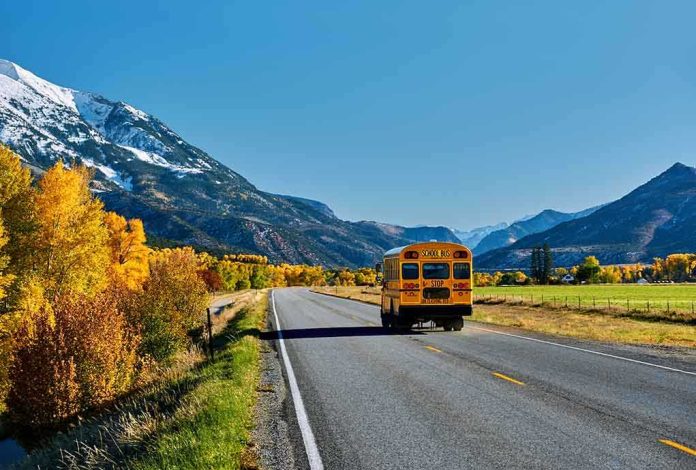
One curve, one collision, and in seconds, a routine overnight journey through Peru’s southern mountains became a national tragedy that exposes the perilous reality of travel in this breathtaking—and deadly—landscape.
Story Snapshot
- Bus plunges over 200 meters after colliding with another vehicle on the Panamericana Sur, killing at least 37 and injuring up to 26 people.
- The crash spotlights Peru’s notorious mountain highways, where poor maintenance and lax enforcement fuel a deadly pattern.
- Recurring fatal accidents in the region reveal deep systemic failures, not just bad luck or isolated driver error.
- Government and industry face renewed scrutiny over road safety, infrastructure, and accountability after one of the deadliest bus disasters in recent memory.
Collision on a Curve: Anatomy of a Catastrophe
Before dawn on November 12, 2025, a passenger bus left the mining town of Chala, bound for Arequipa along Peru’s vital Panamericana Sur highway. The highway, lifeline for commerce and travel in southern Peru, has a reputation for treacherous curves and unpredictable conditions. As the bus rounded a notorious bend in the Ocona district, it collided with a pickup or van—accounts differ—launching the vehicle off the road and into a 200-meter ravine. Thirty-six people died instantly; a thirty-seventh succumbed in hospital. Survivors, many with critical injuries, were rushed to local clinics already strained by routine emergencies.
Rescuers arriving at the scene faced a twisted wreckage by the Ocoa river and a grim tally that now places this among the deadliest Peruvian road disasters in years. Eyewitnesses and emergency responders described a chaotic, desperate struggle to extract survivors from the mangled bus, with local authorities providing casualty updates as the day wore on.
Peru’s Deadly Roads: Geography and Neglect Collide
Southern Peru’s terrain is as unforgiving as it is beautiful: mountain highways carve through cliffs and canyons, with razor-sharp curves and few guardrails. The Panamericana Sur is infamous for both its economic importance and its danger, especially in mining regions where heavy traffic and speed are routine. Road maintenance often lags behind need, and enforcement of traffic laws is patchy at best. In 2024, Peru logged over 3,100 traffic deaths, a figure that dwarfs comparable regions and points to chronic, not incidental, risk. Accidents like this are not rare outliers; they are the tragic norm.
The Ocona district, where the latest crash occurred, has seen multiple fatal bus disasters in the past year alone. In August, a bus overturned killing ten; in July, another crashed en route to the Amazon, leaving 18 dead and 48 injured. The January plunge of a bus into a river killed six and wounded dozens more. Most share a grim pattern: nighttime or early morning departures, high speeds, winding mountain roads, and a final, catastrophic loss of control.
Accountability and the Cycle of Tragedy
Responsibility for this disaster does not rest solely on a single driver or bus company, though both face public scrutiny. The operator, charged with vehicle upkeep and hiring qualified drivers, now confronts questions of liability and safety culture. Survivors and families demand answers, but deeper issues loom: Arequipa’s health authorities, led by Walther Oporto, coordinated the emergency response, but their efforts, however heroic, can only do so much after the fact. Local and national government agencies must now reckon with systemic failures—aging infrastructure, inadequate regulation, and insufficient investment in safety measures.
The investigation into the crash’s precise causes is ongoing. Past probes have often highlighted reckless driving or mechanical failure, but experts argue these are symptoms of broader neglect. Calls for reforms—stricter regulation, regular inspections, better driver training, and investment in guardrails and warning systems—grow louder after each tragedy, yet meaningful change has proved elusive. The power dynamics between profit-driven transport companies, overburdened regulators, and families left grieving create a cycle where headlines fade but risk endures.
Wider Reverberations: From Trauma to Reform?
The short-term consequences are devastating: shattered families, overwhelmed hospitals, and disrupted communities from Chala to Arequipa. Economically, the cost of rescue, medical care, and compensation will ripple across the region. Socially, trust in long-distance bus travel—critical for the rural and working-class Peruvians—is further eroded, replaced by fear and anger. Politically, renewed scrutiny falls on the Ministry of Transport and Communications, which has pledged investigations and reforms before, with limited visible results.
Experts, from transport researchers to public health officials, describe a system in crisis. Peru’s geography is challenging, but deadly outcomes are not inevitable. Calls for technology upgrades—speed controls, GPS tracking, and real-time monitoring—are gaining ground. For now, the Ocona crash stands as yet another urgent signal that Peru’s roads require more than condolences and investigations; they demand structural action. Whether this latest tragedy marks a turning point or becomes another footnote in a long, grim ledger depends on the resolve of those in power and the persistence of public outcry.















